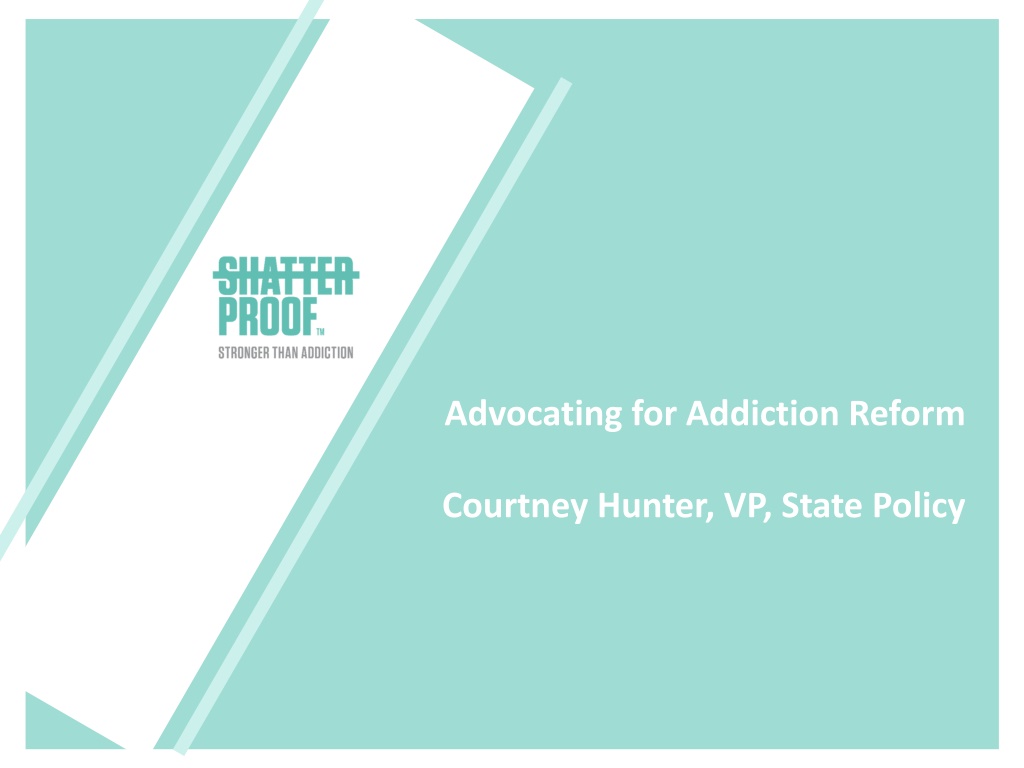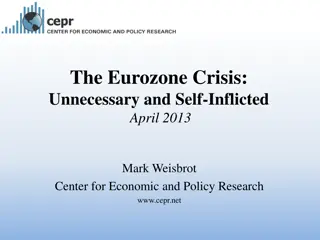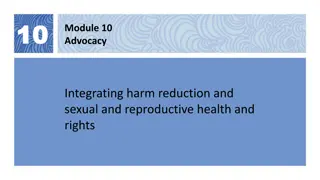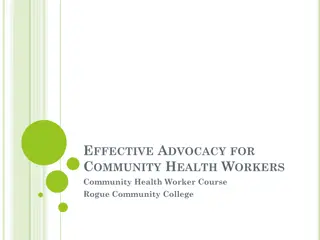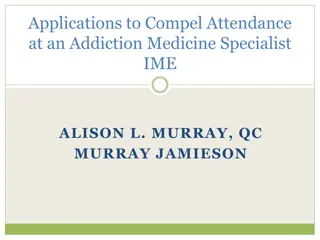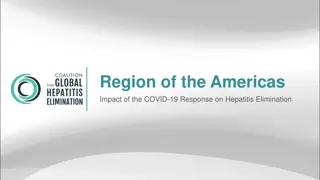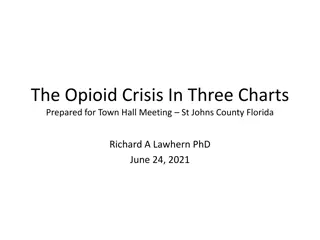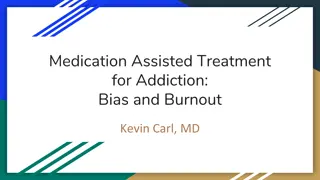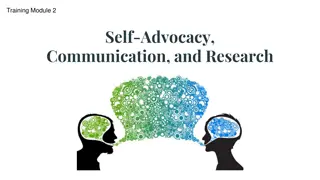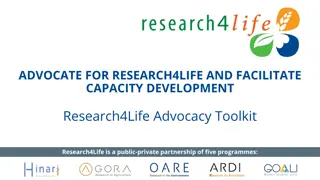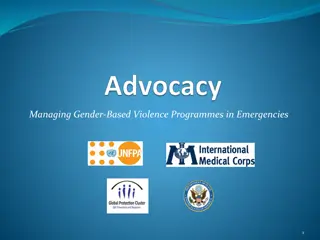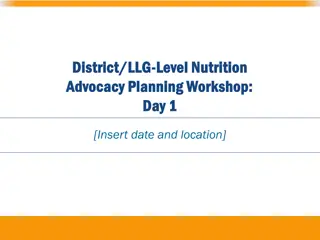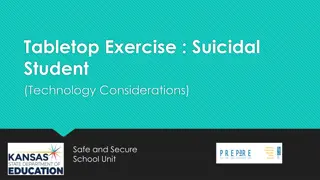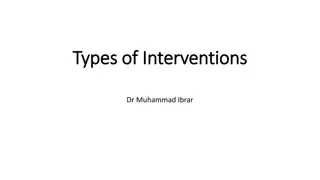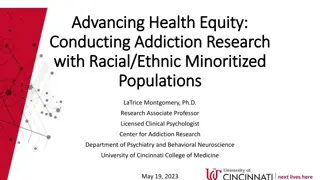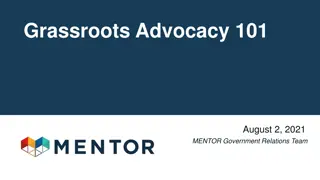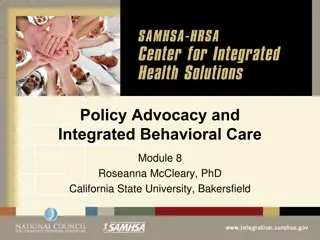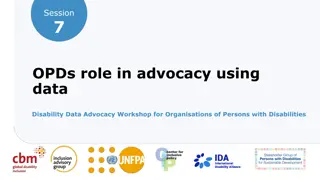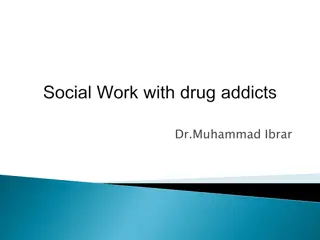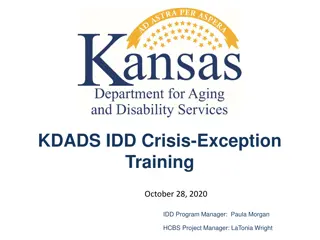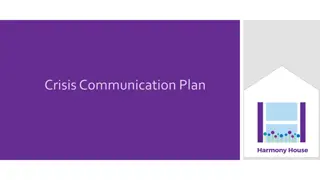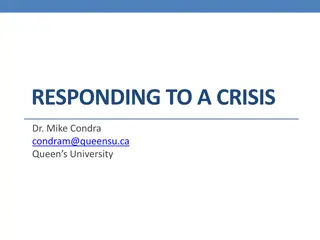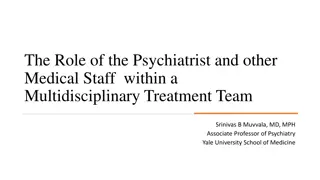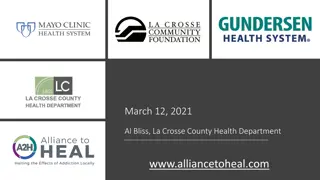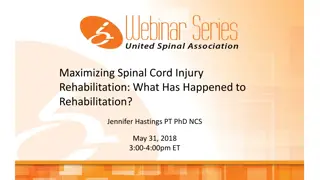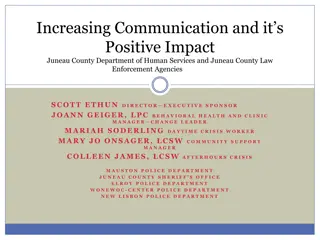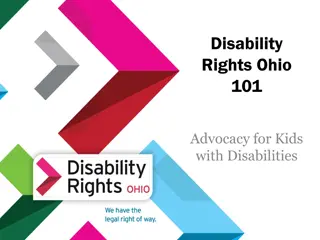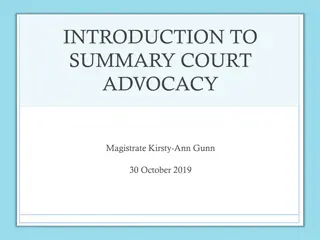Addressing America's Addiction Crisis: Shatterproof's Advocacy Efforts
Shatterproof, a national nonprofit founded in 2012, aims to reverse the addiction crisis in the United States by ending stigma, advocating for evidence-based policies, and ensuring treatment aligns with proven research. The organization's policy team is focused on advancing addiction treatment accessibility, quality, and integration of behavioral health care services. With the worsening impact of COVID-19 on addiction rates, Shatterproof emphasizes the need for effective payment models, training for healthcare professionals in addiction care, and directing opioid litigation funds towards prevention and treatment initiatives. Their priorities aim to reduce the treatment gap and improve payment systems to alleviate financial burdens on families seeking addiction treatment.
Download Presentation

Please find below an Image/Link to download the presentation.
The content on the website is provided AS IS for your information and personal use only. It may not be sold, licensed, or shared on other websites without obtaining consent from the author. Download presentation by click this link. If you encounter any issues during the download, it is possible that the publisher has removed the file from their server.
E N D
Presentation Transcript
Advocating for Addiction Reform Courtney Hunter, VP, State Policy
Who We Are and What We Do Founded in 2012, Shatterproof is a national nonprofit dedicated to reversing the addiction crisis in the United States. We are focused on ending the stigma of addiction and ensuring treatment in the United States is based upon proven research. Our policy team is advocating for evidence-based policies that will advance addiction treatment access and quality, eliminating stigmatizing policies and working with states to promote integration of behavioral health care services
Scope of the Problem in 2020 The economic impact of COVID-19 compounds the already dire addiction crisis. Overdoses are surging as more people are using substances in isolation and in- person help is less available. Disruptions to treatment plans have increased the risk of relapse and overdose among patients. Suspected drug overdoses nationally rose 18% in March, 29% in April and 42% in May. Projections by Well Being Trust estimate that over 75,000 additional deaths will be attributed to deaths of despair (i.e. deaths from suicide, drug overdoses, and alcohol) due to the pandemic. The combination of fentanyl in the stimulant (meth, cocaine) supply is also contributing to rise in overdose deaths DEA reports combinations of stimulants and fentanyl increased from 7% in 2018 to 22% in 2020
Policy and Advocacy Priorities 1. Payment: Ensure payment models support quality, integrated treatment; ensure MAT is covered by Medicaid and commercial insurance without prior authorization, step therapy requirements or other barriers and advance other mental health parity and addiction equity policies. 2. Training and Education: Ensure all healthcare professionals are trained in addiction care, including MAT. 3. Opioid litigation (funding to be used for evidence-based programs): Ensure a significant percentage of the settlement dollars go to prevention and treatment initiatives.
Priorities Aim to Reduce Treatment Gap Only 1 in 10 people receive treatment and gap has not closed with increased need for services Only 1 in 10 people receive treatment and gap has not closed with increased need for services Current federal and state policies that regulate drug use, insurance coverage, etc. are rooted in stigma and not science Need to undo certain policies like the buprenorphine waiver requirement and advocate for more protections within insurance coverage for those in need of treatment
Improving Payment Too many families go bankrupt sending their loved ones to addiction treatment centers not covered by their insurance plans. Worse still, those expensive treatment facilities often do not offer the sort of evidence-based treatment that s proven by research to improve patient outcomes. So more treatment is needed. The cycle continues. There are a number of key policies states can enact to improve treatment coverage and access: Cover MAT through Medicaid and remove pre-authorization Work with commercial insurers to cover MAT without pre-authorization Maximize Medicaid waivers (1115 and 1915) to expand treatment recovery services Coverage of peer recovery support services within Medicaid Partner with health insurance payers to develop alternative payment models and modify enrollee benefit design for these services Continued enforcement of the Parity Act- CA bill SB 855 just signed into law
Collaborative Care Model (CoCM) Collaborative care is an integrative treatment approach to improve outcomes for behavioral health disorders in the primary care setting. CoCM involves: Primary care provider: Usually a family physician, internist, nurse practitioner, or physician s assistant. Care management staff: A member of the clinical team (e.g., nurse, clinical social worker) trained to provide evidence-based care coordination. Psychiatric consultant or specialty addiction provider: Usually a psychiatrist who advises the primary care treatment team. Collaborative care relies on measurement-based care to track patient progress through validated clinical rating scales.
Integration in Behavioral Healthcare The Collaborative Care Model (CoCM) has shown in more than 70 randomized controlled trials to improve health outcomes. Why CoCM? Help close the treatment gap 50% of individuals with a mental health disorder have a comorbid SUD 80% of patients receiving behavioral healthcare do so from their primary care practice. Primary care can connect patients with specialty care when needed Health equity: one of very few interventions in healthcare shown to reduce disparities by race/ethnicity and/or socioeconomic status in patients access to care, quality of care, and outcomes. Cost Savings shown with implementation of CoCM through overall reduced healthcare costs of Medicaid patients
Improving Training and Capacity We need more health professionals trained to provide addiction care. More doctors able to prescribe life-saving medications. More treatment, whether within an inpatient facility or at a doctor s office, that is fully aligned with research-backed best practices. Here are three concrete steps that states can take to improve treatment capacity: Train all healthcare professionals in state in addiction care, including the use of medication-assisted treatment (MAT). Use telehealth models to enable care delivery in rural and underserved areas. Improve reimbursement rates for evidence-based treatment of SUD. With better reimbursement rates, more health care professionals will be motivated to get involved in treating SUD.
Federal Legislation: Increasing Training and Eliminating Stigma Medication Access and Training Expansion (MATE) Act (H.R. 4974) would require doctors who prescribe controlled substances to receive addiction training. Senate companion introduced in early Fall 2020 Mainstreaming Addiction Treatment Act (H.R. 2482/S. 2074) would eliminate the separate waiver, called DATA 2000 X-waiver, needed to prescribe buprenorphine for addiction treatment. Removing barriers to buprenorphine saves lives: For example, France saw a 79% decline in fatal overdoses over three years after buprenorphine prescribing regulations were eliminated in that country.
Weigh in with state and federal officials Click on link below: Tell Your Reps: Pass Key Addiction Legislation Addiction is a treatable illness, but we re needlessly losing hundreds of lives every day. Join me in asking Congress to support key addiction legislation.
State Advocacy Resources Download a state advocacy toolkit here: https://www.shatterproof.org/advocacy/state-toolkit Please reach out with follow-up questions or concerns. Courtney Hunter, VP State Policy, Shatterproof chunter@shatterproof.org
